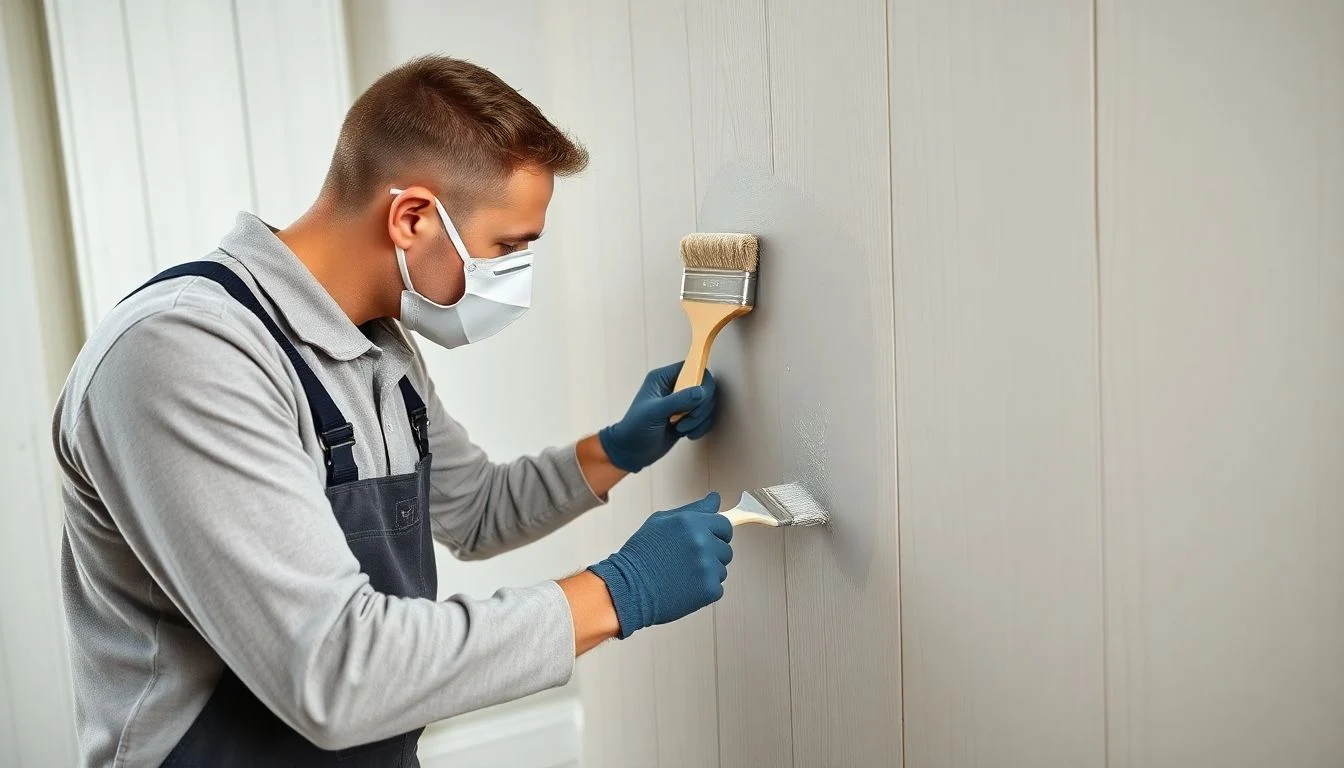Fire Retardant Paint-Painting & Decorating
Protecting our homes from fire hazards is crucial. Fire-retardant paint services are a vital tool in enhancing safety while maintaining aesthetics. This guide explores everything you need to know about fire-retardant paint, its applications, and how it can help you create a safer environment.
Introduction: Protecting Your Home with Fire Retardant Paint
The Growing Need for Fire Safety in Homes
Every year, thousands of homes face fire damage, risking lives and property. Statistics show that home fires can spread quickly, emphasising the need for effective fire safety measures. With increased awareness, homeowners seek ways to reduce risks, and fire-retardant paint is a popular choice.Understanding the Role of Fire-Retardant Paint
Fire-retardant paint helps to slow down fire spread. It forms a protective layer when exposed to heat, insulating the surface beneath and providing valuable time to escape or extinguish flames. This type of paint is ideal for various surfaces, including wood, drywall, and metal.Beyond Aesthetics: The Crucial Safety Aspect
While many may consider fire-retardant paint solely for visual appeal, its primary role is safety. This paint not only enhances a space but also safeguards occupants by reducing fire risks in key areas.Types of Fire Retardant Paint: A Detailed Overview
Intumescent Paints: How They Work and Their Applications
Intumescent paints expand when exposed to heat, creating a thick, insulating char. This layer acts as a barrier, preventing flames from reaching the substrate. Typically used in buildings, they protect structural elements like beams and columns.Water-Based vs. Solvent-Based Fire Retardant Paints: Choosing the Right One
- Water-Based: Easier to apply, quick drying, and have lower VOC emissions. Suitable for interior applications where minimal odour is essential.
- Solvent-Based: Offers higher durability and better adhesion for exterior applications but may have a stronger smell and longer drying times.
Speciality Paints: Addressing Specific Fire Risks
Certain environments require tailored solutions. For instance, kitchens or industrial settings may need specific formulations to handle higher heat levels or chemical exposure. Always assess your unique requirements before selecting paint.Applying Fire Retardant Paint: A Step-by-Step Guide
Surface Preparation: Ensuring Optimal Adhesion
Start by cleaning the surface to remove dirt, grease, or old paint. Any imperfections should be sanded down. For best results, ensure the area is dry and free of moisture.Application Techniques: Brushes, Rollers, Sprayers
Depending on your choice of paint and the surface:- Brushes: Great for detailed work and small areas.
- Rollers: Ideal for larger, flat surfaces.
- Sprayers: Provide even coverage and are time-efficient for extensive applications.
Drying Time and Multiple Coats: Achieving Maximum Protection
Follow manufacturer instructions for drying times. Usually, two coats are recommended for optimal fire protection. Allow each coat to dry completely before applying the next.Benefits and Limitations of Fire Retardant Paint
Enhanced Fire Resistance: Protecting Lives and Property
These paints add an essential layer of protection. Enhanced resistance can significantly reduce damage during a fire event, providing more time to evacuate.Cost-Effectiveness Compared to Other Fire Safety Measures
Investing in fire-retardant paint is generally more affordable than installing major fire suppression systems. It helps save on potential damages and insurance costs in the long run.Potential Drawbacks and Considerations
While beneficial, fire retardant paint may have limitations:- Not a substitute for building codes or other safety measures.
- May require specific application conditions, such as temperature and humidity.
Fire Retardant Paint in Specific Applications
Protecting Wooden Structures: Beams, Frames, and More
Wood is particularly vulnerable to fire. Applying fire retardant paint on beams and frames not only enhances safety but helps maintain the wood's appearance.Commercial Applications: Warehouses, Offices, and Public Spaces
In businesses, fire-retardant paint protects against fire hazards and complies with regulatory standards. It's essential for protecting employee safety and operational integrity.Protecting High-Risk Areas: Kitchens, Garages, and Basements
Kitchens and garages are prone to fire incidents. Using fire-retardant paint in these spaces can significantly mitigate risks and enhance safety.Choosing and Using Fire Retardant Paint: Expert Tips
Selecting the Right Paint for Your Needs: Factors to Consider
When choosing fire-retardant paint, consider:- Intended location: interior vs. exterior
- Type of material being painted
- Any specific fire risks associated with the area

